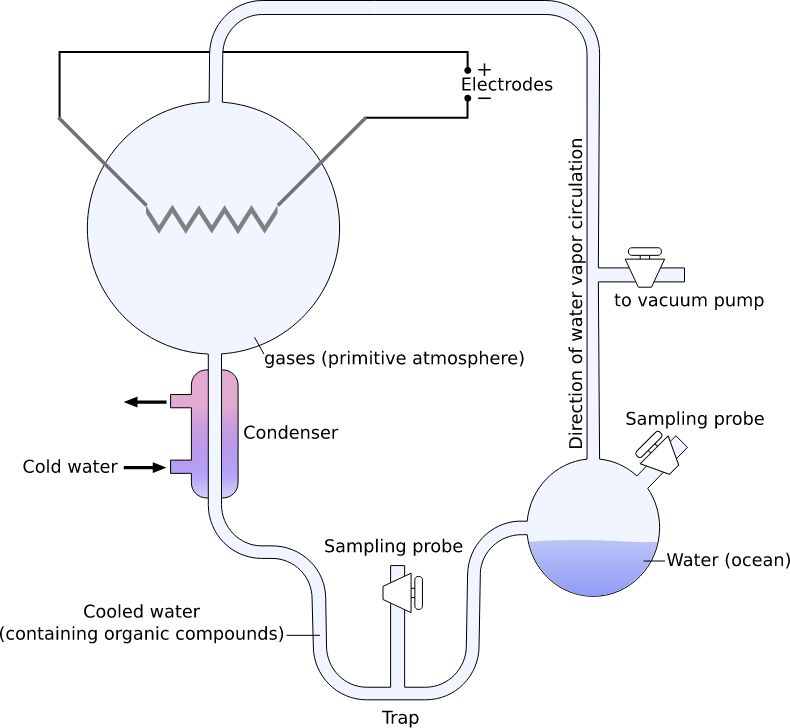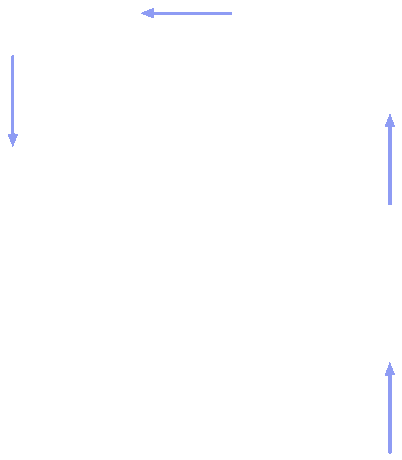Embark on a captivating scientific journey as you delve into our online Miller-Urey simulation, meticulously designed to recreate the primordial conditions of the early Earth and unravel the mysteries of life's origins
Try Now
The Miller-Urey experiment, conducted in 1952, aimed to demonstrate the possibility of generating organic molecules from a series of inorganic chemical compounds that were assumed to have been present in the atmosphere of early Earth. Stanley Miller, who was a young doctoral student in Harold Urey's laboratory at the time, devised a laboratory apparatus that simulated the atmosphere of early Earth, into which he introduced methane, ammonia, hydrogen, and water vapor. As a source of energy, Miller used electrical discharges to simulate possible lightning from storms in the atmosphere. Over the course of a week, they observed the formation of various organic compounds, including amino acids, which are the building blocks of proteins and essential for life as we know it.
The significance of the Miller-Urey experiment lies in providing empirical evidence that the primitive Earth environment was capable of producing the basic building blocks of life through natural processes. This demonstrated the possibility of studying the origin of life on Earth from an empirical standpoint, rather than purely theoretical. This experiment gave rise to a new field of study, prebiotic chemistry, which has since diversified significantly, demonstrating the potential for generating nearly any of the organic molecules that make up living organisms. It thus stands as a foundational discovery that revolutionized our approach to the question of life's origin.
This section provides essential sources and references related to the Miller-Urey experiment, offering valuable insights into its methodology, results, and significance.
Explore related research uncovering the latest advancements
This section showcases a virtual replication of the Miller-Urey experiment, offering a digital simulation that emulates the conditions and outcomes of the original study. The presence and concentration of amino acids in each simulation do not represent real results. They have been created just for the purpose of generating hypothetical data to make interpretations about how changes in the experimental conditions can change the results.








| Compound | output pg/ml |
|---|---|
| Alanine | 0.00 |
| Arginine | 0.00 |
| Asparagine | 0.00 |
| Aspartic Acid | 0.00 |
| Cysteine | 0.00 |
| Glutamine | 0.00 |
| Glutamic Acid | 0.00 |
| Glycine | 0.00 |
| Histidine | 0.00 |
| Isoleucine | 0.00 |
| Leucine | 0.00 |
| Lysine | 0.00 |
| Methionine | 0.00 |
| Phenylalanine | 0.00 |
| Proline | 0.00 |
| Serine | 0.00 |
| Threonine | 0.00 |
| Tryptophan | 0.00 |
| Tyrosine | 0.00 |
| Valine | 0.00 |
For further information about the Miller-Urey experiment or to get in touch with our team of experts, please don't hesitate to contact us through the provided channels. We are excited to share our knowledge and engage in discussions about this groundbreaking research.